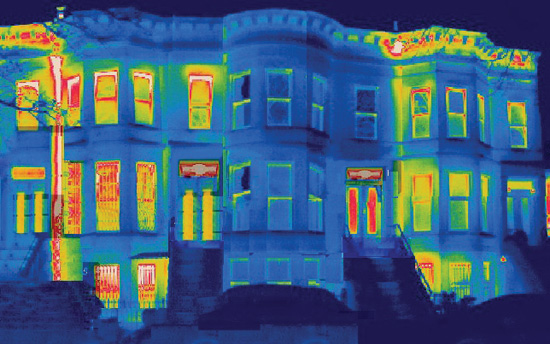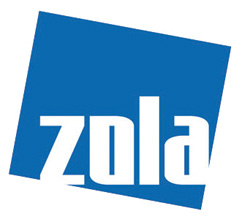European Windows Boost U.S. Performance and Design
Passive House Analysis and European Windows
In studying the results of such projects, project teams can choose to analyze their results using methods presented by the Passive House Institute U.S. (PHIUS) as well as using products certified by PHIUS. The institute's program for projects is called PHIUS+ Certification, which combines a design verification protocol with a closely monitored program of quality assurance and quality control (QA/QC) performed on site by qualified PHIUS+ raters.
The Passive House certification process includes the design review and an analysis of the project's energy model to identify any potential errors or areas of improvement. Modeling and calculator tools, such as WUFI Passive, allow for both static and dynamic modeling and hygrothermal analysis. Following construction, the projects are tested and inspected by Home Energy Rating System (HERS) Raters, who are certified by the Residential Energy Services Network, known as RESNET. These inspectors are trained to score the projects using the RESNET HERS Index, which many local, state, and federal financial incentive programs require to demonstrate compliance.
The scoring system is based on a reference home based on the 2006 International Energy Conservation Code (IECC) with a HERS Index of 100. Compare this baseline to a net-zero energy home, which scores a HERS Index of 0—so the lower a home's HERS Index, the more energy efficient it is. Each 1-point decrease in the HERS Index corresponds to a 1 percent reduction in energy consumption over the reference home, according to RESNET; so, for example, a building with a HERS Index of 75 is 25 percent more energy efficient than the baseline, IECC-compliant reference home.
In addition to the design modeling tools, many project teams are using imaging and visualization tools to better understand window performance in the schematic and design-development phases. For example, tools like AnTherm can calculate temperature distributions and heat flows in building structures, with particular benefit for identifying thermal heat bridges. Some of the required inputs have already been handled by manufacturers of European-style windows, including the section geometry, thermal conductance and transfer coefficients, and boundary conditions such as air temperatures and U-values.

Image courtesy of Zola European Windows
Thermal imaging shows areas of heat loss in an older townhouse building. High levels are seen at the windows, doors, and window-wall interface, as well as the roof-wall interface behind the cornice. The house in the middle was retrofitted with high-performance European windows, and this thermal image shows significant reductions in energy loss.
With these tools, architect can easily see and compare the performance of wall sections and window products. One team recently studied the heat-flow characteristics of highly insulating European-made windows for a new building project, the Amethyst Passive House in Colorado. In another instance, a project team in New York City studied the effectiveness of a retrofit window by comparing visualizations of thermal heat flows of the original windows and the high-efficiency, European replacement windows.
Conclusions: High-Performance and European Windows
In general, the best-performing house and building designs will meet such strict, beyond-code standards as Passive House and Living Building Challenge. Additional certifications and ratings may help ensure the projects are even more sustainable—for example, the use of Forest Stewardship Council (FSC)-certified wood for components such as wood window frames. But the core attributes of high-performance buildings include energy efficiency, effective insulation, and reduced air infiltration, among other key measures.
For those projects where energy savings and occupant comfort matter most, key to design is specifying and designing window installations for superior thermal performance and airtightness. A number of European fenestration products meet and exceed the strictest energy codes, using effective and lasting technologies in window and door construction. Key variables to review for European window selection include:
Low overall U-values. These can be as low as 0.123 for triple-glazed units, although quad-glazed versions have achieved 0.09.
Airtightness. In general, specifying triple seals will help achieve a very tight envelope and limit unwanted air infiltration or exfiltration.
Novel glazing options. A growing number of manufacturers offer triple and quad glazing, as well as Argon- and Krypton-filled IGUs of up to 54mm.
Premium hardware. Selection of high-quality hardware is important to premium window performance, ensuring tight closure and long-term durability. Tilt-and-turn has been favored recently for its reliable performance.
Effective frames. Center-of-glass (CoG) values for window performance tell only half the story; frames must also allow for energy-efficient operations. Review available frame types, designs, and insulating materials; seek to eliminate any thermal bridging.
Spacers. Warm-edge spacers are a requirement for high-performance windows, according to experts in sustainable design and Passive House standards.
With these conditions met, architects can better address the multiple, interrelated ways in which fenestration products affect building performance and energy efficiency.
It is critical to view current energy codes—and NFRC ratings and labels—as important, but only as a baseline performance indicator. It indicates that there has been a base level of review, product inspection, and testing, but does not guarantee that windows achieve high performance levels such as those required for the Passive House certification. More important is to look for windows that achieve tested performance levels that meet specific prescriptive and performance-based design criteria. Ultimately, better thermal control, SHGC, and visible light transmission will help the projects achieve better overall operations criteria and top certifications.
Among the most visible trends in architectural design is the use of European designed and manufactured window technologies to elevate the level of building performance. Among these product solutions are European tilt-turn assemblies and European casement and fixed fenestration that display markedly different construction and materials as compared to normative, domestic-made windows. As with other advances in construction methods and components, energy-efficient windows that address occupant comfort and need have become a hallmark of building performance for many leading U.S. architects.
Endnote
- Energy Efficiency Solutions for Historic Buildings: A Handbook, edited by Alexandra Troi, Zeno Bastian (EURAC research)
C.C. Sullivan is a marketing communications consultant specializing in architecture and construction.
 |
Swiss-trained architect, Florian Speier, founded Zola Windows in 2011. Unsatisfied with the domestic selection of windows, Speier partnered with European manufacturers to design extremely energy-efficient windows and doors. Zola offers extensive product lines—from the top-of-the-line Passive House ThermoPlus Clad, to budget-friendly uPVC windows that are perfect for multifamily developments. www.zolawindows.com |








